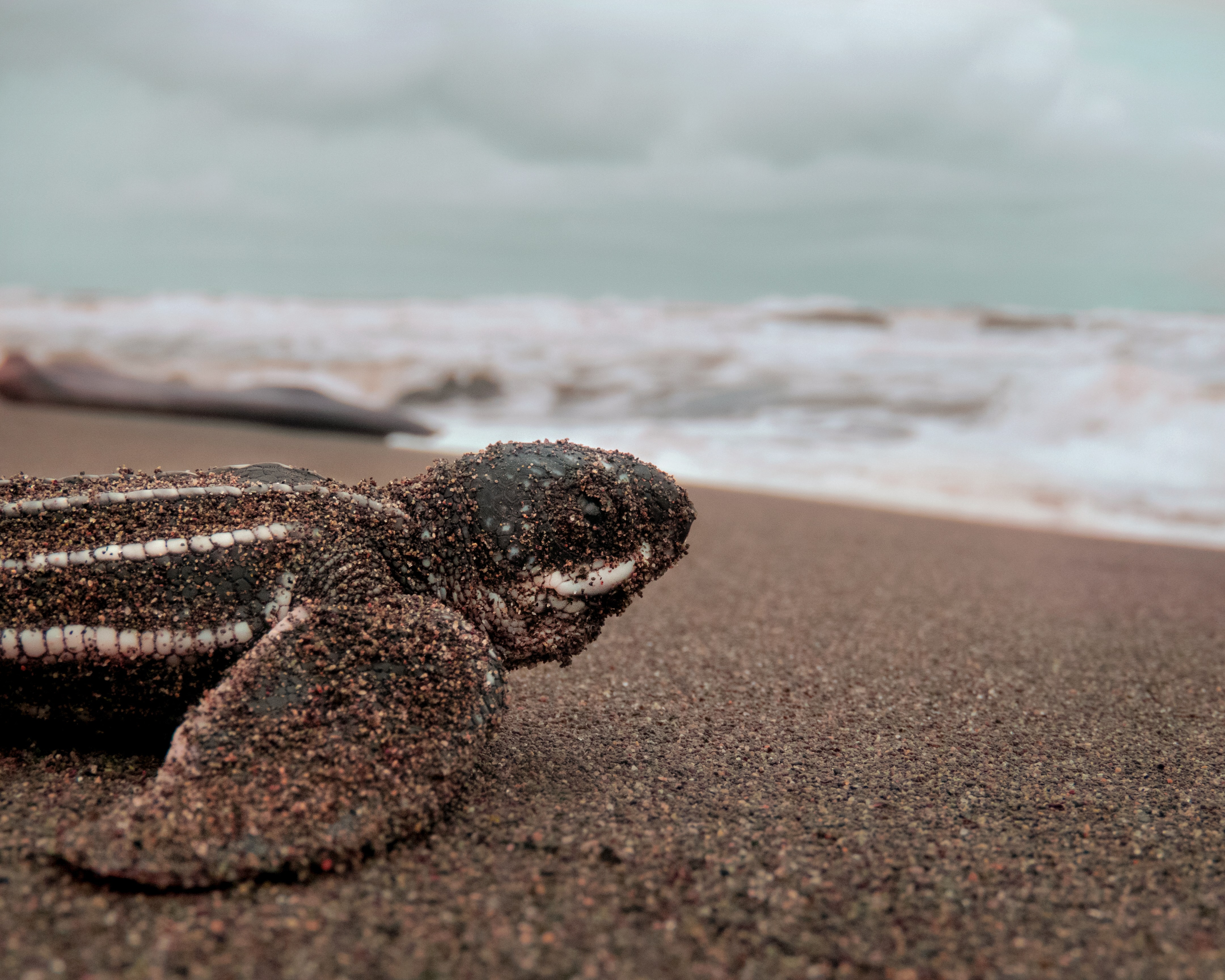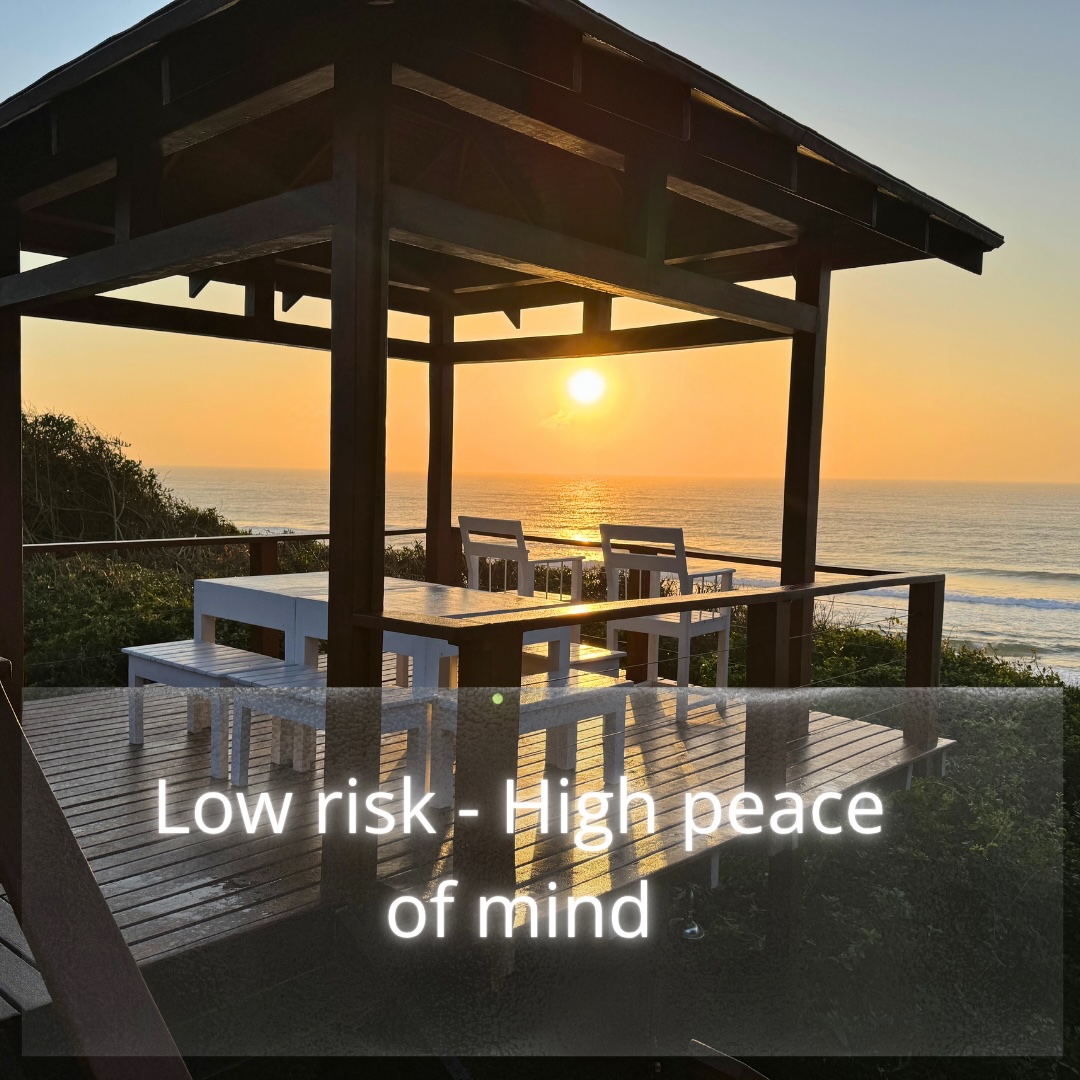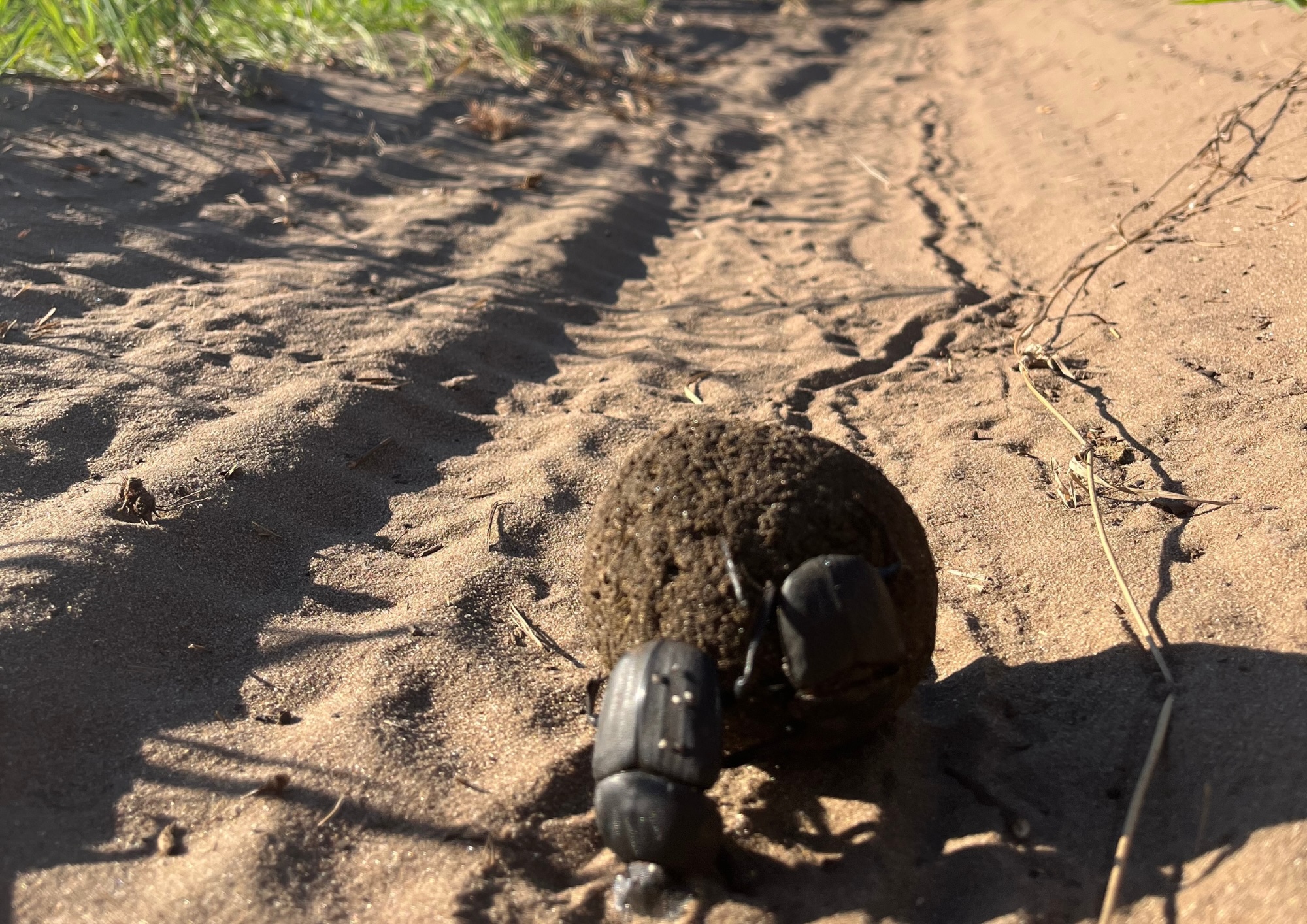Having previously lived in Ponta Malongane, Southern Mozambique, for six years, I grew an affection for the Loggerhead and Leatherback turtles that come and nest on the beaches in the area every season. I became close friends with Pierre and Yvonne Lombaard (the couple that spends every turtle breeding season in Ponta Malongane doing research on the turtles) and learned a great deal about these magnificent creatures. Loggerhead and Leatherback numbers are declining worldwide, the largest turtles in the world, are critically endangered, mostly due to humans.
The bright lights from beachside developments disorientate and confuse the turtles as well as the hatchlings. If a female turtle is trying to come up out of the water to nest and sees lights she is either going to go the wrong way or she will wander around all over the beach and get lost and exhausted. Other times they come out and see the light and go right back into the water. If a nesting female is disturbed while searching for a nesting site she is only able to hold her eggs back for 48-72 hours. If she is not able to nest she will drop her eggs into the ocean and the hatchlings won't have a chance at survival.
Turtles use the reflection of the moon on the sea as their orientation/compass marker. Lights from beachside developments give the turtles a false conception of which direction they need to go to head to the sea. Sea turtles like a nice dark beach whether hatching or nesting. So when they come up and encounter all of this light they just have no idea what to do.
Breeding season is from late October until March. The females lay their eggs from October to January and the hatchlings come out in February and March. With December and early January being the busiest time in Ponta Malongane and Ponta Mamoli it is imperative that we try to make as many people as possible aware of what you should and shouldn’t do when it comes to the turtles.
HOW CAN YOU HELP?
We have to ensure minimal disturbances on the beach – no people, no vehicles, no lights, and no dogs.
Keep the use of torchlight to a minimum so as not to scare the turtles back into the water.
It’s important for escorted groups to be able to touch, feel and photograph an egg-laying turtle as long as they stay behind her. By the time she has started laying her eggs, she’s in a trance and is oblivious to anything except bright white light. That experience will help people respect them and remember why it’s so important to protect them.
If you own a home, or you are going on holiday, in this area, keep the use of light/s to a minimum and switch all lights off when you go to bed at night.



